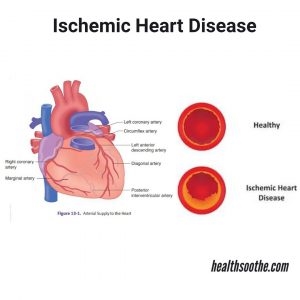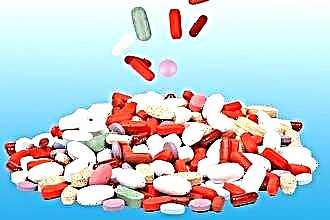The main symptom of sinusitis is profuse discharge from the nostrils. They arise as a result of inflammation of the mucous membrane of the paranasal sinuses. But it turns out that sinusitis can occur without this symptom. When the bony walls of the paranasal sinuses, the so-called maxillary sinuses, are affected, nasal congestion occurs, nasal breathing becomes difficult, but there is no discharge. This usually means that sinusitis has developed without a runny nose. It can appear in a person of any age, but it is more difficult to diagnose it in young children, since it is difficult for them to clearly explain their condition.
The main symptoms of the disease
 The disease is accompanied by several signs inherent only to him. These include:
The disease is accompanied by several signs inherent only to him. These include:
- A slight increase in body temperature (no more than 37.8OC), which remains practically unchanged for several days.
- The nose is stuffed up so that it is impossible to breathe, and the situation does not improve for more than 14 days.
- In the area of the upper jaw and forehead, discomfort occurs, which becomes brighter when talking, chewing.
- If you lie down horizontally, the face begins to ache more, the intensity of pain sensations changes depending on the position of the head.
- On the X-ray, the sinuses of the nose are transmitted by opaque spots.
Sinusitis symptoms in children
It is more difficult to diagnose sinusitis without a runny nose in a child, since he cannot identify the symptoms described above and talk about them. Therefore, you need to carefully monitor the behavior and condition of the baby. The following signs indicate the disease:
- the patient's nose is stuffy;
- a stagnant smell is clearly coming from the mouth;
- the child is lethargic, gets tired quickly, talks about fatigue all the time;
- the baby complains of discomfort in and around the nose, which intensifies in the evening;
- the patient is worried about ear, toothache, sometimes hearing deteriorates.
Other symptoms of the disease may also appear. But whatever they are, as soon as the child begins to complain about something, he must be taken to the doctor for a consultation. Many diseases in children proceed a little differently than in adults, so it is important to provide a small patient with qualified assistance on time.
Treatment of ailment
 Sinusitis without a runny nose always requires a properly selected therapy, which must be applied until the disease goes away completely. Otherwise, complications may arise in the form of inflammation of the lining of the brain - meningitis. If the vessels of the brain are affected, sepsis develops. You should consult a doctor as soon as possible, who will select the treatment in accordance with the stage of the disease and the nature of its course.
Sinusitis without a runny nose always requires a properly selected therapy, which must be applied until the disease goes away completely. Otherwise, complications may arise in the form of inflammation of the lining of the brain - meningitis. If the vessels of the brain are affected, sepsis develops. You should consult a doctor as soon as possible, who will select the treatment in accordance with the stage of the disease and the nature of its course.
As a rule, therapy is limited to conservative methods. But in difficult situations, surgery is used.
If drainage of the maxillary sinus by the usual method is not possible, pierce the wall of the sinus through the nose, pump out purulent accumulations and wash the affected cavity with antiseptic, antimicrobial agents, antibiotics.
Non-surgical therapy
Even if sinusitis without snot is detected, it is necessary to take medications that improve the outflow of accumulated mucus from the maxillary sinus. Usually doctors  nasal sprays are attributed, but they cannot be used for more than five days, otherwise the nasal mucosa will atrophy. Topical medications should be selected and prescribed by the doctor, based on the nature of the manifestation and course of the disease, the individual characteristics of the patient. If the drugs are used incorrectly, various side effects often occur, and the expected result never comes.
nasal sprays are attributed, but they cannot be used for more than five days, otherwise the nasal mucosa will atrophy. Topical medications should be selected and prescribed by the doctor, based on the nature of the manifestation and course of the disease, the individual characteristics of the patient. If the drugs are used incorrectly, various side effects often occur, and the expected result never comes.
To relieve swelling, reduce inflammation in the nose, it is instilled with vasoconstrictor agents, tampons moistened with medicinal solutions are inserted into the nasal passage, they are smeared with special ointments around the nostrils. Physiotherapy procedures are often prescribed, such as UHF, blue light, sollux, sometimes dynamic current is used.
If there is an increase in body temperature, which lasts for several days, antipyretic drugs are prescribed. Pain relievers are used to relieve severe pain. In these cases, bed rest is required.
With the allergic nature of sinusitis, doctors prescribe antihistamines. Sometimes the cause of the disease is a curvature of the nasal septum or dental caries in the upper jaw. Under such conditions, effective treatment without eliminating the causes of the disease is not possible.
Folk remedies
If sinusitis without a runny nose is detected at the initial stage and has not yet overgrown with severe symptoms, you can fight it with folk methods. The wild rosemary herb is often used, which relieves well various inflammation of the mucous membranes. In our case, based on it  a nasal instillation agent is being prepared. We take 10 g of herbs and half a glass of vegetable oil, mix and leave for 10 days in a dark place. Stir the tincture every day. The medicine is instilled in three drops into each nostril.
a nasal instillation agent is being prepared. We take 10 g of herbs and half a glass of vegetable oil, mix and leave for 10 days in a dark place. Stir the tincture every day. The medicine is instilled in three drops into each nostril.
A clay compress will be effective for warming up the sinuses.... To do this, the clay is dissolved in warm water to the consistency of a thick dough. While the mixture is warm, it is spread on cut bandages and applied to the sinuses. Additionally, the bandage can be impregnated with oil, since the clay dries out the skin of the face. The compress is kept for at least 40 minutes, even if there are discomfort in the nasal area.
Well, with this form of sinusitis, an infusion of lemon grass, plantain leaves, lemon balm helps. Mix 10 g of each herb and pour 250 g of hot water. After the mixture has been infused for a day, the liquid is filtered and dripped three times a day, three drops into each nostril.
You should not rely only on folk recipes. In this case, they are good as an addition to conservative treatment and physiotherapy. If you start the disease, you will have to deal with it surgically.
Features of treatment in children
Sinusitis without a runny nose often occurs in patients 5 - 7 years old. If therapy is not carried out on time, sinusitis can become chronic by adolescence. The risk group includes children prone to respiratory diseases, allergic reactions, especially to edema of an allergic nature.
 In babies, treatment begins with the removal of edema, opening the sinuses of the nose. For this, the nasal passage is washed with a spray, which also has an anti-allergic effect, and then vasoconstrictor drops are instilled. Almost always, in such cases, children are prescribed antibiotics in the form of dispersible tablets or suspensions. Taking antibiotics and antihistamines lasts at least seven days.
In babies, treatment begins with the removal of edema, opening the sinuses of the nose. For this, the nasal passage is washed with a spray, which also has an anti-allergic effect, and then vasoconstrictor drops are instilled. Almost always, in such cases, children are prescribed antibiotics in the form of dispersible tablets or suspensions. Taking antibiotics and antihistamines lasts at least seven days.
It is imperative that the child be treated for bad teeth, inflammation of other ENT organs, and when the child recovers, the throat and nose are sanitized.
What should not be done in any case
 In order not to aggravate the course of the disease, with sinusitis, it is forbidden to visit saunas and baths, since the elevated temperature increases the swelling of the sinuses, due to which the patient's condition only worsens. For the same reason, it is impossible to warm up the sinuses with vodka lotions, salt, eggs, potatoes and other folk remedies.
In order not to aggravate the course of the disease, with sinusitis, it is forbidden to visit saunas and baths, since the elevated temperature increases the swelling of the sinuses, due to which the patient's condition only worsens. For the same reason, it is impossible to warm up the sinuses with vodka lotions, salt, eggs, potatoes and other folk remedies.
It is forbidden to instill in the nose means that do not have an antibacterial effect. You can not inject honey into the nose for allergy sufferers. An allergic reaction can cause additional mucosal edema. Then allergic rhinitis will join the sinusitis.
Do not use vasoconstrictors for longer than the time specified in the instructions. They cauterize and dry out the mucous membrane, and their long-term use leads to its atrophy.
Pay attention to your food.Harmful, heavy, fatty food weakens the immune system and the body as a whole, does not give it the strength to fight infections.
Prevention of sinusitis
To prevent the development of sinusitis, it is always necessary to completely treat the runny nose, which has arisen due to allergies and colds. You should be especially careful with adenoids, rhinitis, congenital or acquired defects of the nasal passages and septum.
To prevent the disease, you should adhere to the following rules:
- Free the nose from snot by closing one nostril. Then the rejected mucus immediately enters the nasal passage, bypassing the maxillary sinuses and not stagnating in them.
 Bury drops correctly. During this procedure, the head is slightly tilted back, and then still towards the nostril, which is planned to be instilled. Then the drops will not fall into the nasopharynx, but into the middle nasal passage.
Bury drops correctly. During this procedure, the head is slightly tilted back, and then still towards the nostril, which is planned to be instilled. Then the drops will not fall into the nasopharynx, but into the middle nasal passage.- Do not limit treatment to taking only antipyretics and antibiotics. They will relieve unpleasant symptoms, but they will increase the risk of developing side diseases. To prevent this, you need to consult a doctor who will select the necessary drugs.
- If, after a course of therapy, the ailment again made itself felt, you should not self-medicate. In case of relapse, the cause of the disease can be very serious, so you need to consult a specialist.
Remember that sinusitis in any form usually indicates a negligent attitude towards your health. Any suspicious symptoms should see a doctor.

 Bury drops correctly. During this procedure, the head is slightly tilted back, and then still towards the nostril, which is planned to be instilled. Then the drops will not fall into the nasopharynx, but into the middle nasal passage.
Bury drops correctly. During this procedure, the head is slightly tilted back, and then still towards the nostril, which is planned to be instilled. Then the drops will not fall into the nasopharynx, but into the middle nasal passage.

